9 Best Herbal Tinctures For Gum Pain
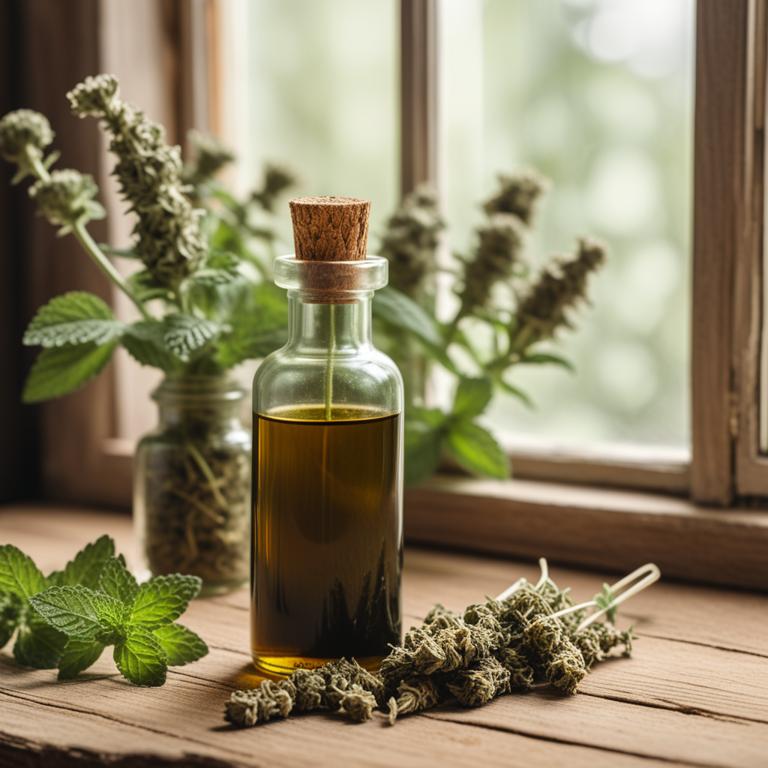
Herbal tinctures for gum pain are liquid extracts made from plants and herbs that are used to treat various gum-related issues such as toothaches, gum inflammation, and mouth ulcers.
These tinctures offer several benefits, including reducing pain and inflammation, promoting healing, and providing antibacterial properties to prevent infections.
Some effective herbal tinctures for gum pain include peppermint, which numbs the gums and reduces pain, eucalyptus, which has anti-inflammatory properties, and tea tree oil, which has antibacterial properties to prevent infections.
Other examples of herbal tinctures used to treat gum pain include clove oil, which has analgesic and anti-inflammatory properties, myrrh, which promotes healing and reduces inflammation, and calendula, which has anti-inflammatory and antimicrobial properties to promote healing and prevent infections.
According to the study, tinctures for gum pain can be effectively made from medicinal plants such as Aloe Barbadensis Miller (Aloe Vera) due to its antifungal properties and ability to treat gum disorders.
Below there's a list of the 9 best herbal tinctures for gum pain.
- 1. Aloe barbadensis tinctures
- 2. Salvia officinalis tinctures
- 3. Echinacea purpurea tinctures
- 4. Eucalyptus globulus tinctures
- 5. Mentha x piperita tinctures
- 6. Echinacea angustifolia tinctures
- 7. Melissa officinalis tinctures
- 8. Rosmarinus officinalis tinctures
- 9. Salvia miltiorrhiza tinctures
Also you may be interested in...
TODAY'S FREE BOUNDLE
Herb Drying Checklist + Herbal Tea Shopping List + Medicinal Herbs Flashcards
Enter you best email address below to receive this bundle (3 product valued $19.95) for FREE + exclusive access to The Aphotecary Letter.
$19.95 -> $0.00
1. Aloe barbadensis tinctures

Aloe barbadensis tinctures have been used to treat gum pain ailment due to their anti-inflammatory, antimicrobial, and analgesic properties, which help to reduce swelling and pain in the gums.
This herbal preparation contains bioactive constituents such as aloin, aloe-emodin, and acemannan, which have been shown to exhibit anti-inflammatory and antimicrobial activity, thereby helping to treat gum pain.
By reducing inflammation and preventing infection, aloe barbadensis tinctures can help to alleviate gum pain and promote healing of the affected area.
The benefits of using aloe barbadensis tinctures to treat gum pain include reduced pain and inflammation, accelerated healing, and prevention of further complications, making it a popular natural remedy for gum health.
Related Study
According to "Iranian journal of basic medical sciences", Aloe barbadensis tinctures for gum pain showed to act via mechanisms such as decrease in gingival inflammation and bleeding, inhibition of dental plaque formation, and improvement in different indices of oral hygiene.
2. Salvia officinalis tinctures
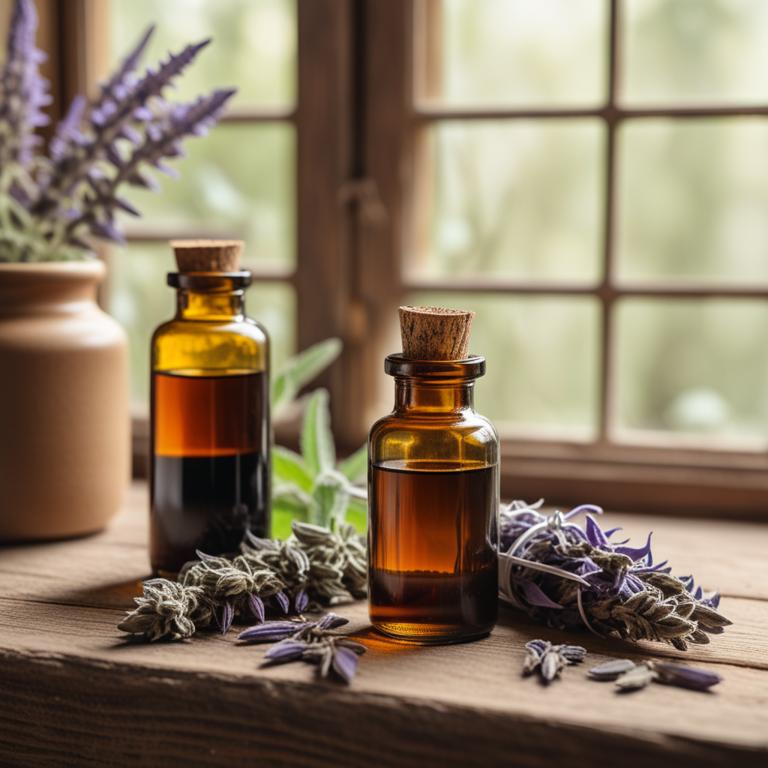
Salvia officinalis tinctures have been traditionally used to treat gum pain, which is often caused by inflammation and infection of the gums.
The anti-inflammatory and antimicrobial properties of Salvia officinalis tinctures help to reduce swelling and combat infection, thereby alleviating gum pain.
The bioactive constituents of Salvia officinalis tinctures, including rosmarinic acid and carnosic acid, contribute to their anti-inflammatory and antimicrobial effects, making them effective in treating gum pain.
Regular use of Salvia officinalis tinctures can lead to the benefits of reduced inflammation, prevention of infection, and promotion of overall oral health.
Related Study
According to "Journal of cancer research and clinical oncology", Salvia officinalis tinctures have good evidence for alleviating symptoms of gingivitis.
3. Echinacea purpurea tinctures

Echinacea purpurea tinctures have been traditionally used to treat gum pain ailments, such as gingivitis and periodontitis, due to their anti-inflammatory and antimicrobial properties.
The bioactive constituents of Echinacea purpurea, including alkylamides, glycosides, and polyphenols, help to reduce inflammation and combat bacterial infections in the gums, thereby alleviating pain and discomfort.
By inhibiting the production of pro-inflammatory cytokines and promoting the production of anti-inflammatory cytokines, Echinacea purpurea tinctures help to soothe and calm the gums, reducing pain and swelling.
The benefits of using Echinacea purpurea tinctures to treat gum pain ailments include reduced inflammation, improved oral health, and a decrease in the risk of complications such as tooth loss and infection.
4. Eucalyptus globulus tinctures

Eucalyptus globulus tinctures have been traditionally used to treat gum pain, also known as periodontitis, due to their anti-inflammatory and antimicrobial properties.
The bioactive constituents of Eucalyptus globulus, including eucalyptol and alpha-pinene, help to reduce inflammation and prevent the growth of bacteria that can cause gum pain.
By reducing inflammation and preventing bacterial growth, Eucalyptus globulus tinctures can help to alleviate gum pain and promote healing of the gums.
Regular use of Eucalyptus globulus tinctures can provide long-term benefits in maintaining healthy gums and preventing further gum pain.
5. Mentha x piperita tinctures
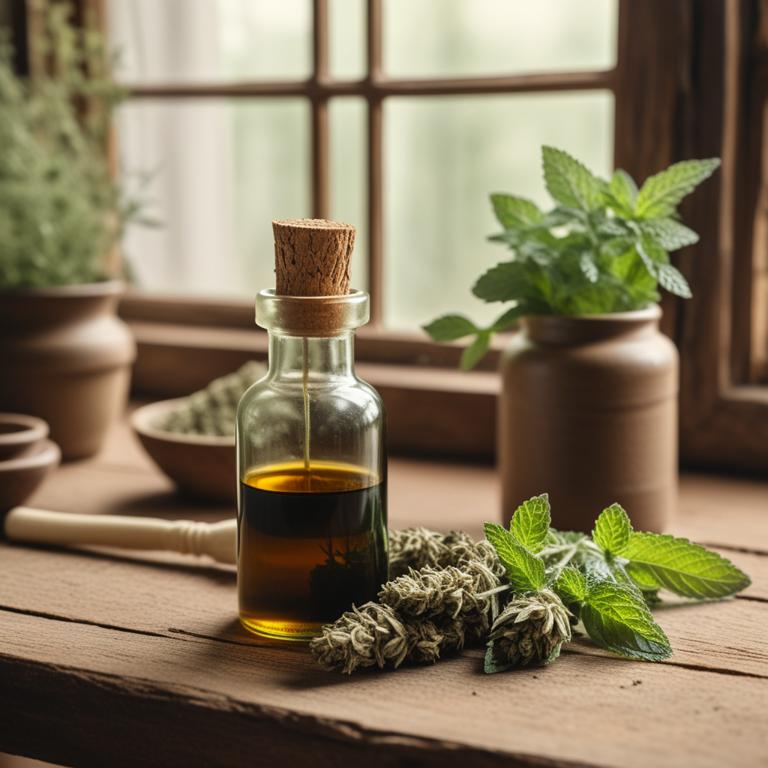
Mentha x piperita tinctures, derived from the peppermint plant, have been traditionally used to treat gum pain, also known as gingivitis or periodontitis, due to their anti-inflammatory and antiseptic properties.
The tinctures help to treat gum pain by reducing inflammation, killing bacteria, and promoting wound healing, making them an effective natural remedy for this common oral health issue.
The bioactive constituents of Mentha x piperita tinctures, including menthol, menthone, and limonene, are responsible for their therapeutic effects, which help to ease pain, reduce swelling, and prevent infection.
The benefits of using Mentha x piperita tinctures to treat gum pain include their non-toxic and non-invasive nature, making them a safe and effective alternative to conventional treatments.
6. Echinacea angustifolia tinctures

Echinacea angustifolia tinctures have been traditionally used to treat gum pain, also known as gingivitis, due to their anti-inflammatory and antimicrobial properties.
The bioactive constituents, including alkylamides, glycosides, and phenolic acids, help to reduce inflammation and fight off bacterial infections that can cause gum pain.
By using Echinacea angustifolia tinctures, individuals can experience relief from gum pain and inflammation, promoting overall oral health and well-being.
The benefits of using Echinacea angustifolia tinctures to treat gum pain include reduced inflammation, improved wound healing, and a lower risk of complications such as gum recession and tooth loss.
7. Melissa officinalis tinctures
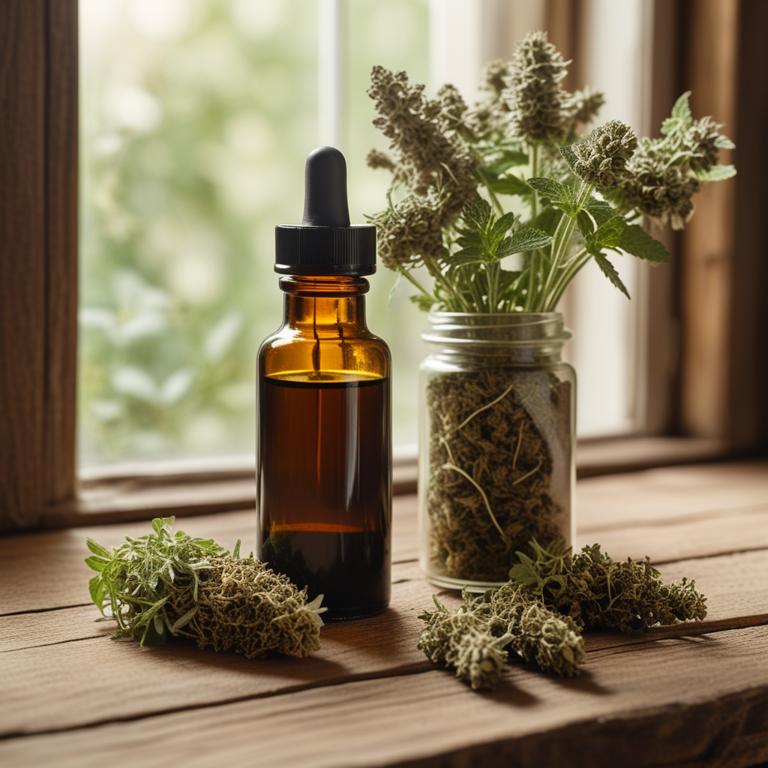
Melissa officinalis tinctures have been traditionally used to treat gum pain, specifically gingivitis, due to their antimicrobial and anti-inflammatory properties.
The bioactive constituents, such as linalool and rosmarinic acid, help to reduce inflammation and combat the growth of bacteria that can cause gum pain.
By using Melissa officinalis tinctures, individuals can experience relief from gum pain and inflammation, promoting a healthy oral environment.
The benefits of this herbal preparation include reducing the risk of gum disease, alleviating symptoms of gingivitis, and promoting a balanced oral microbiome.
8. Rosmarinus officinalis tinctures
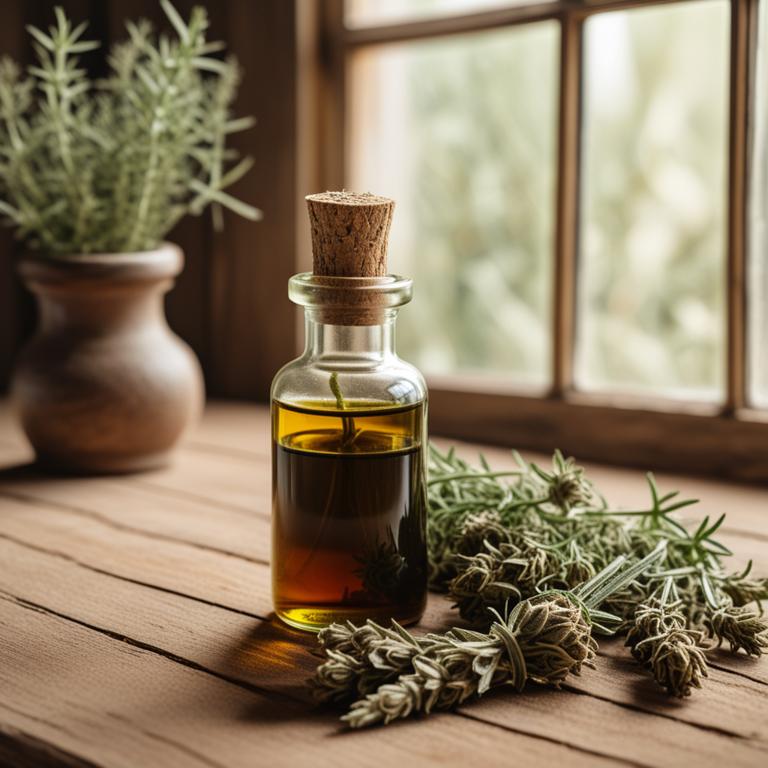
Rosmarinus officinalis tinctures have been traditionally used to treat gum pain, a common oral health issue, due to their anti-inflammatory and antimicrobial properties.
The bioactive constituents, such as carnosic acid and rosmarinic acid, in these tinctures help to reduce inflammation and fight off bacterial infections that cause gum pain.
By using Rosmarinus officinalis tinctures, individuals can alleviate gum pain and prevent further complications, such as gum recession and tooth loss, while also promoting overall oral health and well-being.
The benefits of using these tinctures include reduced inflammation, improved gum health, and a lower risk of developing more severe oral health issues.
Related Study
According to "Evidence-based complementary and alternative medicine : eCAM", Rosmarinus officinalis tinctures for gum pain were found to be more potent in both antinociceptive and anti-inflammatory effects compared to Syzygium aromaticum, with a synergistic interaction between the two when combined in a 1:1 ratio, suggesting their potential effectiveness in treating gum pain.
9. Salvia miltiorrhiza tinctures
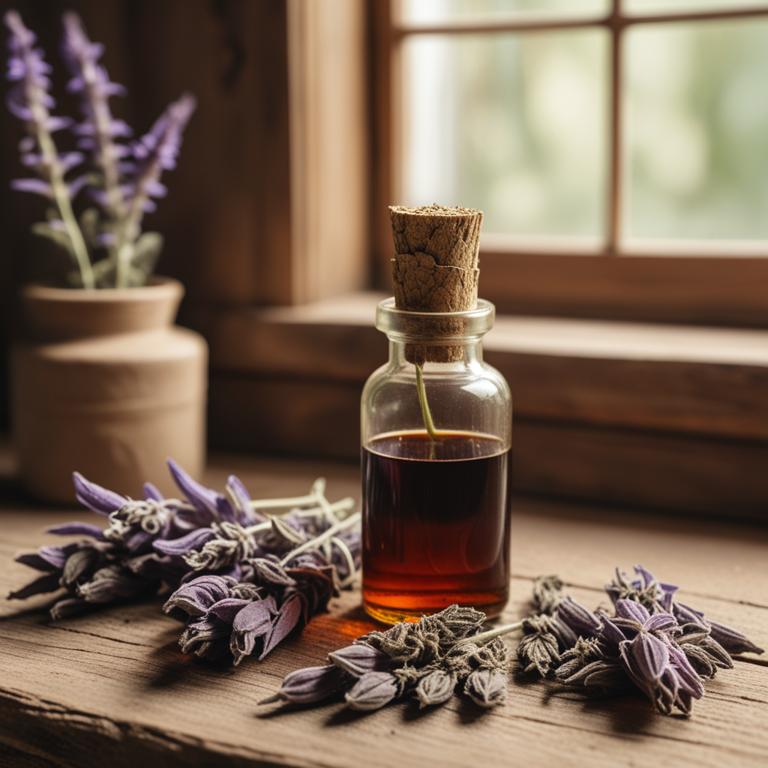
Salvia miltiorrhiza tinctures have been traditionally used to treat gum pain, a common ailment affecting the oral cavity.
The properties of this herbal preparation, particularly its anti-inflammatory and antimicrobial properties, help to reduce pain and inflammation in the gums.
The bioactive constituents, including tanshinones, salvianolic acids, and phenolic acids, contribute to its therapeutic effects by reducing oxidative stress and promoting tissue repair.
By using Salvia miltiorrhiza tinctures, individuals can benefit from its analgesic and anti-inflammatory properties, ultimately leading to improved gum health and reduced pain.